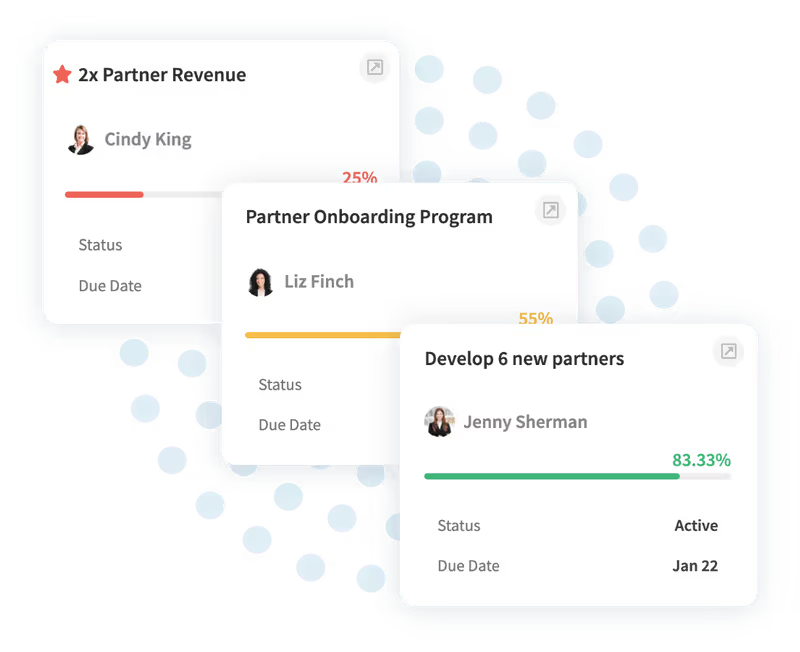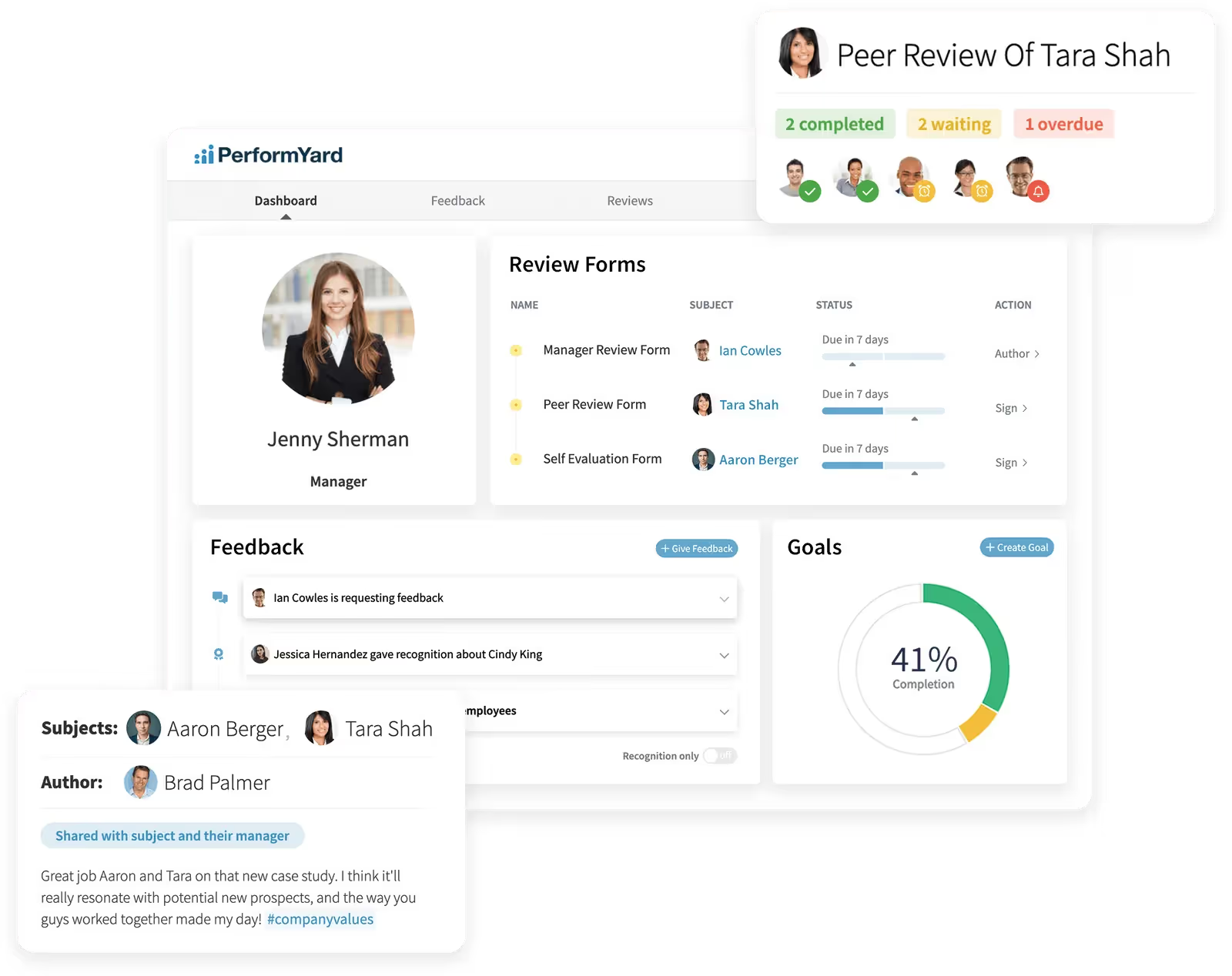2025 Career Progression Framework - Top Examples & Models
Understanding and navigating career progression is more crucial than ever. Employees more frequently leave jobs they feel unsupported in. Therefore, it is important to instill in your employees confidence about their future. A clear career progression framework helps individuals plan and meet their goals. It also helps organizations retain talent and foster internal growth.
Additionally, these frameworks provide a path for employees to follow. They outline the skills, experiences, and milestones needed for advancement. By establishing clear expectations and opportunities for development, career progression frameworks help bridge the gap between current roles and future aspirations. This ensures that both personal ambitions and organizational needs are met.
This article will explore the parts of effective career progression. We will also go over their benefits and the steps to implement them in your organization.
What Is a Career Progression Framework?
A career progression framework is a structured plan that outlines the pathway for employees to advance in their careers within an organization. It typically includes clearly defined roles and responsibilities, necessary skills, and competencies. Additionally, it can have performance expectations and potential career trajectories.
Basically, this framework creates a work environment where employees can learn and grow. By
being transparent, employees can easily understand what is needed for promotion and growth. .
Benefits of a Career Progression Framework
Creating a career development plan can have great effects on your workforce. It is a great advantage for a manager and his or her employees:
- Employee Motivation and Engagement: The framework motivates employees by setting clear goals and milestones. This increases employee engagement and commitment to their roles.
- Talent Retention: It enhances employee satisfaction and loyalty by offering structured career paths. It reduces turnover rates and retains valuable talent within the organization.
- Skill Development: It encourages employees to get the competencies needed for higher-level positions.
- Succession Planning: It facilitates effective succession planning by identifying and preparing potential leaders for future roles. This ensures future organizational stability and continuity.
- Organizational Growth: The framework supports organizational growth by aligning employee development with business needs
Steps to Building a Career Progression Framework
Providing steps to create a general career framework can be a great way to jumpstart your own. Here are the basic steps to start creating career frameworks for your employees:
Step 1: Assess Organizational Needs and Goals.
Determine your organization's current and future needs. Align the career progression framework with your business objectives.

Step 2: Define Job Roles and Career Paths
Clearly define all job roles in the organization. This should include their responsibilities, needed skills, and qualifications.
Step 3: Establish Competency Levels
Determine the technical and soft skills required for each role and career stage.
Step 4: Set Performance Metrics and Criteria
Develop clear performance metrics and criteria for advancement. These could be specific achievements, experience, education, or skill acquisition.
Step 5: Create Development Programs
Design training programs that help employees get the skills and experience they need.
Step 6: Install Regular Performance Reviews
Create a regular performance review process to give employees feedback on their progress. Performance review software can help do this job more comfortably.

Step 7: Foster a Culture of Continuous Learning
Give employees resources and opportunities to grow, and recognize their hard work.
Step 8: Communicate the Framework Clearly
Make sure all employees know about and understand the career progression framework.
Step 9: Monitor and Adjust the Framework
Continuously monitor the effectiveness of the career progression framework. Gather feedback from employees and managers to make adjustments as needed.
Step 10: Celebrate and Reward Achievements
Recognize and celebrate employee achievements and milestones within the framework.

Career Progression Framework Examples
1. Technology Industry Example
- Software Developer Career Framework
- Junior Developer
- Responsibilities: Writing code, fixing bugs, and learning company tools and technologies
- Skills: Basic programming languages, version control, and debugging
- Mid-Level Developer
- Responsibilities: Developing features, performing code reviews, and collaborating with cross-functional teams
- Skills: Advanced programming, software design patterns, databases, and version control
- Senior Developer
- Responsibilities: Leading projects, mentoring junior developers, and optimizing system architecture
- Skills: System architecture, leadership, project management, advanced and debugging
- Lead Developer/Engineering Manager
- Responsibilities: Managing a team of developers, strategic planning, and stakeholder communication
- Skills: People management, strategic planning, advanced technical skills, and budgeting
- Junior Developer
2. Finance Industry Example
- Financial Analyst Career Frameworks
- Junior Financial Analysts
- Responsibilities: Data collection, basic financial analysis, and report preparation
- Skills: Excel, financial modeling, and basic accounting
- Financial Analysts
- Responsibilities: Analyzing financial statements, budgeting, and forecasting
- Skills: Financial analysis, budgeting, and financial software
- Senior Financial Analyst
- Responsibilities: Leading analysis projects and advising on investment strategies and complex financial modeling
- Skills: Advanced financial modeling, investment analysis, and leadership
- Finance Manager
- Responsibilities: Managing financial reporting, strategic planning, and team leadership
- Skills: Financial management, strategic planning, team management, and advanced analytics
- Junior Financial Analysts
3. Marketing Industry Example
- Marketing Career Framework
- Marketing Coordinators
- Responsibilities: Supporting marketing campaigns, managing social media, and content creation
- Skills: Content creation, social media management, and basic marketing analytics
- Marketing Specialist
- Responsibilities: Developing marketing strategies, conducting market research, and campaign execution
- Skills: Market research, campaign management, and SEO/SEM
- Marketing Manager
- Responsibilities: Leading marketing teams, strategic planning, and budget management
- Skills: Strategic marketing, team leadership, budgeting, and advanced analytics
- Marketing Director/VP of Marketing
- Responsibilities: Overseeing all marketing activities, aligning marketing with business goals, and executive reporting
- Skills: Executive leadership, strategic vision, comprehensive marketing knowledge, and stakeholder communication
- Marketing Coordinators
More Ways to Support Employee Development
Performance management software like PerformYard is essential for creating effective career progression frameworks. It centralizes employee performance data and enables clear goal setting and tracking. Employees now can easily understand what is required for advancement.
The software helps identify skill gaps, allowing for employee development plans. Enhanced communication between employees and managers ensures productive career development conversations. PerformYard also facilitates recognition and rewards, motivating employees to achieve their goals.
As organizations grow, PerformYard scales, maintaining consistency in performance management and career progression. These tools provide a structured way to support employee development and organizational efficiency.


.jpg)

.jpg)
